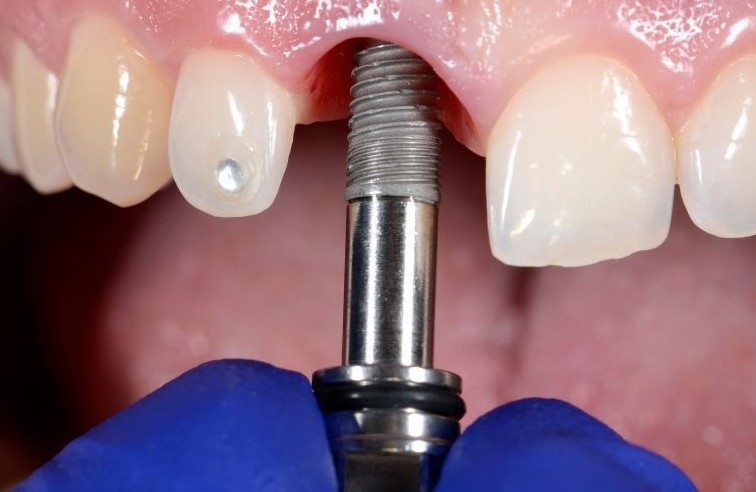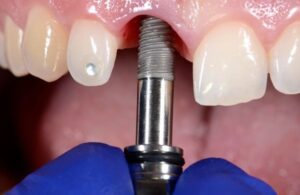
Dental implants are one of the most effective and durable solutions for replacing missing teeth. Whether you’re missing one tooth or several, dental implants provide a natural-looking, permanent solution that can significantly improve your smile and oral health. Understanding what to expect from the dental implant procedure can help ease any concerns you might have and prepare you for the process from start to finish.
What Are Dental Implants?
Dental implants are artificial tooth roots, typically made of titanium, that are surgically placed into your jawbone. These implants provide a stable foundation for fixed or removable replacement teeth designed to match your natural teeth. The benefits of dental implants include improved appearance, better oral function, and long-term durability, making them a popular choice for tooth replacement.
The Initial Consultation
The first step in the dental implant process is an initial consultation with your dentist or oral surgeon. During this visit, your dentist will evaluate your overall oral health, discuss your treatment goals, and determine whether you’re a good candidate for dental implants. This evaluation typically includes:
- A thorough examination of your teeth and gums.
- Dental X-rays or a CT scan to assess your jawbone density.
- A review of your medical history to ensure there are no underlying health issues that could complicate the procedure.
Your dentist will also explain the various options for dental implants, such as single-tooth implants, implant-supported bridges, or full-arch restorations, depending on your specific needs.
Bone Grafting (If Necessary)
In some cases, patients may not have sufficient jawbone density to support dental implants. If this is the case, your dentist may recommend a bone graft. This procedure involves adding bone material to your jaw to create a solid foundation for the implant. Bone grafting can come from a donor, your own body, or synthetic materials.
The bone graft may take several months to heal and integrate with your natural bone. Once the graft has healed and the jaw is strong enough, the dental implant procedure can proceed.
The Implant Surgery
The next step in the dental implant process is the surgical placement of the implant itself. This is typically an outpatient procedure performed under local anesthesia, though sedation options are available for patients who may feel anxious.
During the surgery, the dentist will make an incision in the gum to expose the jawbone. A small hole is then drilled into the bone, and the titanium implant is placed securely into the bone. The gum is then stitched up, and the healing process begins.
In the months following the surgery, a process called osseointegration occurs. This is when the jawbone grows around the implant, anchoring it firmly in place. Osseointegration usually takes three to six months, depending on the patient.
Healing and Recovery
After the dental implant surgery, it’s normal to experience some swelling, bruising, and minor discomfort around the implant site. Your dentist will provide you with pain management recommendations and instructions for taking care of the surgical site, including:
- Avoiding hard foods and sticking to a soft diet during the healing phase.
- Using ice packs to reduce swelling.
- Keeping your mouth clean by rinsing with salt water or an antiseptic mouthwash as directed by your dentist.
During the healing process, you will have regular follow-up appointments with your dentist to ensure the implant is integrating well with your jawbone.
Placing the Abutment
Once osseointegration is complete, the next step is to place the abutment. The abutment is a small connector piece that attaches to the dental implant and holds the replacement tooth in place. In some cases, the abutment is placed at the same time as the implant, but often, it is done in a second minor procedure after the implant has fully healed.
During this procedure, your dentist will reopen the gum to expose the implant, attach the abutment, and then close the gum tissue around it, leaving the abutment exposed. Healing after this procedure typically takes a couple of weeks.
Attaching the Final Crown
The final stage of the dental implant procedure is placing the permanent crown, which serves as your new tooth. This process begins with taking impressions of your teeth to create a custom-made crown that matches the shape, size, and color of your natural teeth.
Once the crown is ready, your dentist will securely attach it to the abutment. At this point, your dental implant will look and function just like a natural tooth, allowing you to chew, speak, and smile with confidence.
Post-Procedure Care
Although dental implants are designed to be a long-term solution, proper oral care is essential to ensure their longevity. Brushing, flossing, and regular dental check-ups are crucial to maintaining both the implants and your natural teeth.
Your dentist may also recommend a special mouthwash or additional cleaning tools to help maintain the implant area. Avoiding habits like smoking, which can interfere with healing, is also important to prevent any complications.
Conclusion
The dental implant procedure is a multi-step process that takes several months to complete, but the results are well worth the investment. From the initial consultation to the final placement of your crown, each stage is designed to ensure the success and longevity of your implants. By understanding what to expect throughout the process, you can approach your dental implant journey with confidence and look forward to a restored smile and improved oral health.








